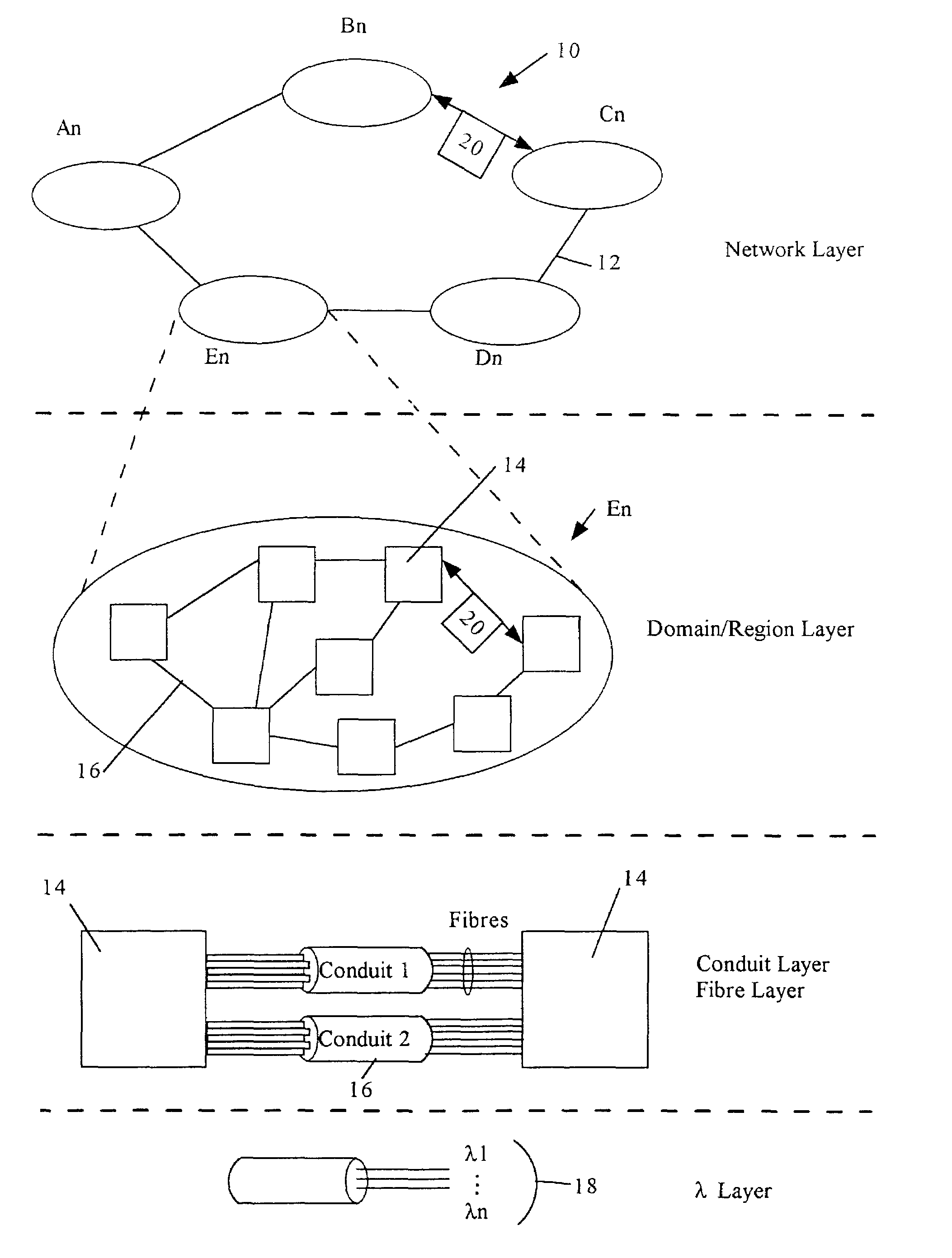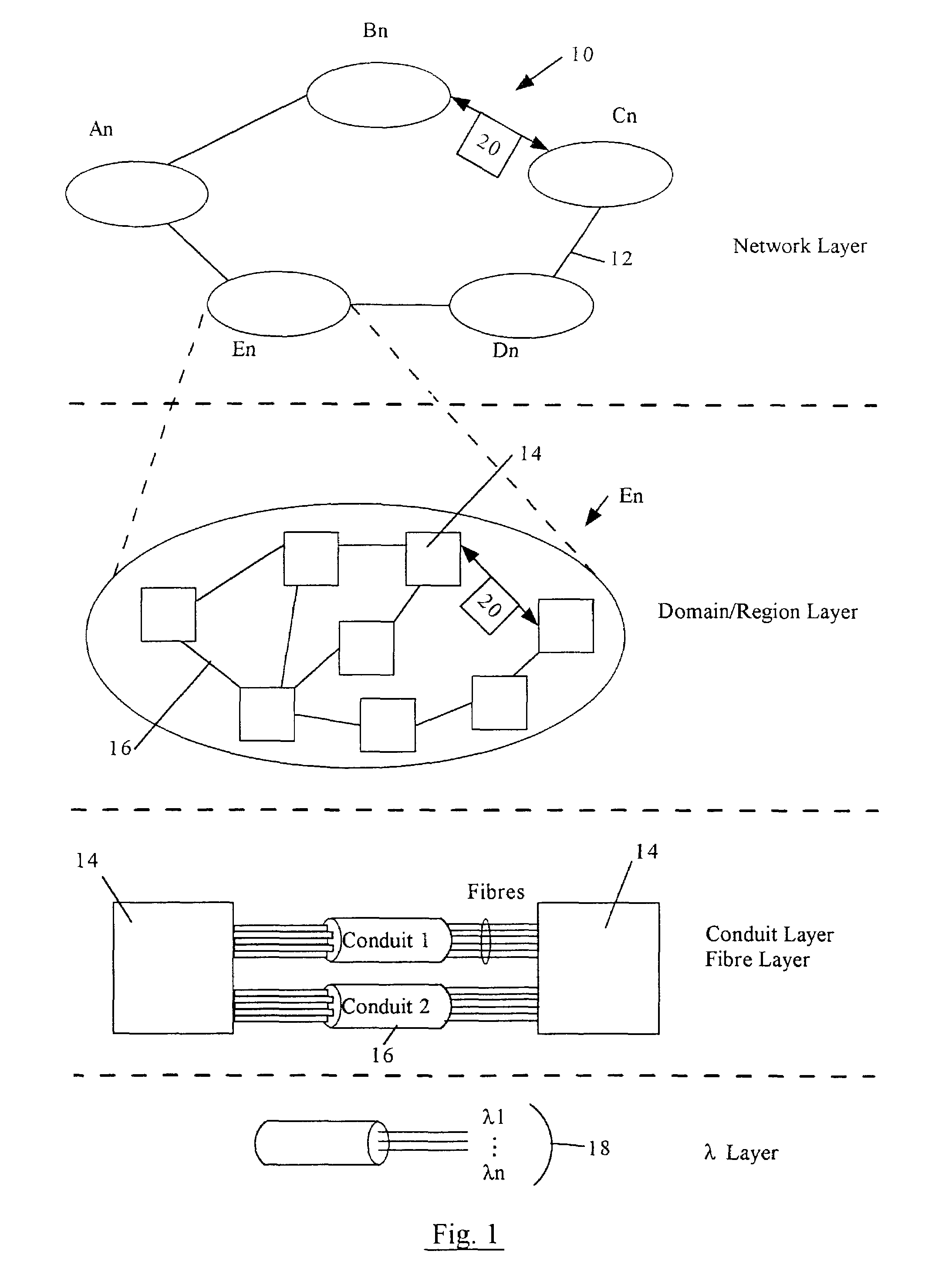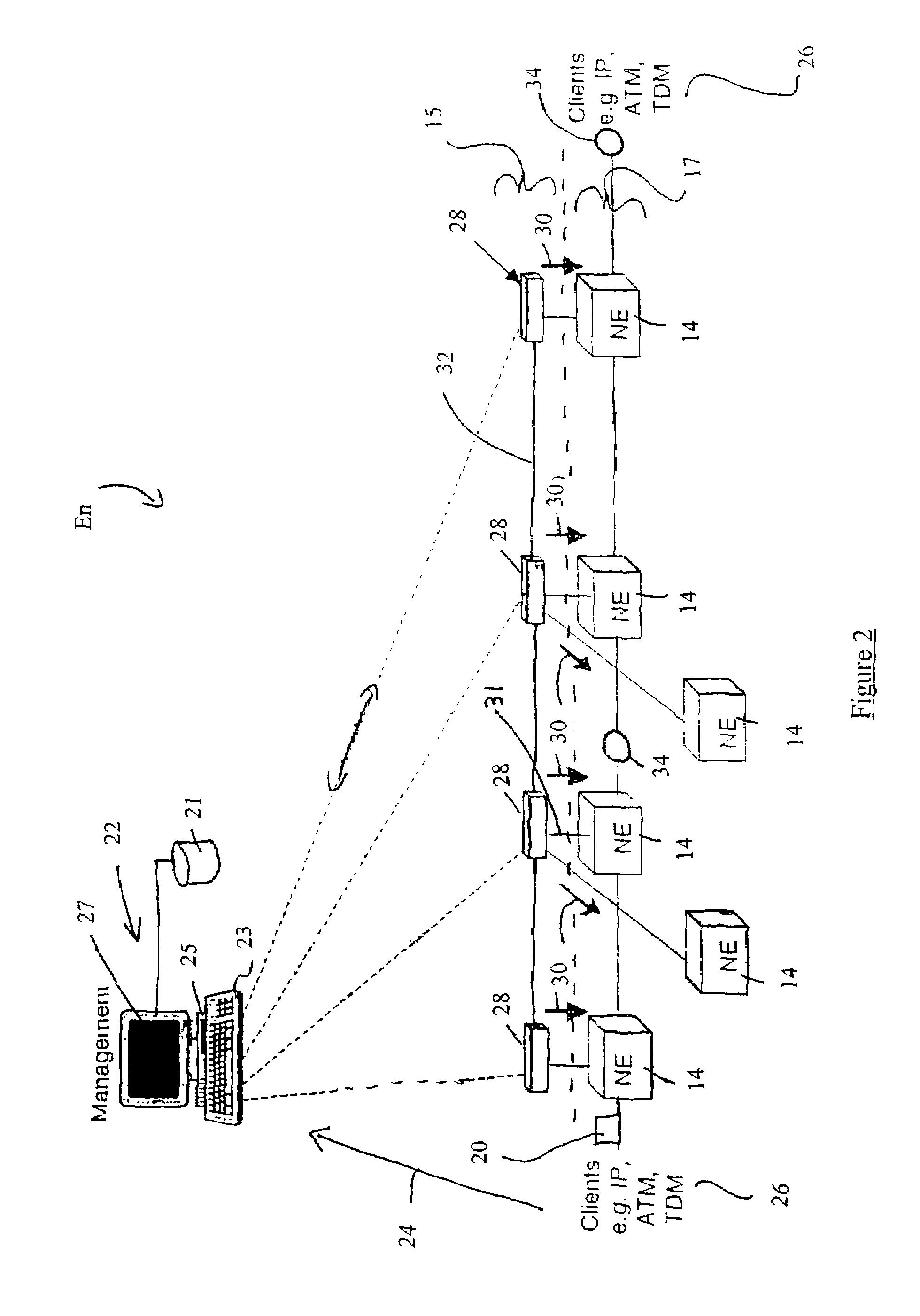Constraint based routing with non-transitive exceptions
- Summary
- Abstract
- Description
- Claims
- Application Information
AI Technical Summary
Benefits of technology
Problems solved by technology
Method used
Image
Examples
Embodiment Construction
[0020]Referring to FIG. 1, one example of a distributed network is a global telecommunication network 10, which contains a series of sub-networks An, Bn, Cn, Dn, En interconnected by bulk data transmission mediums 12. These mediums 12 can consist of such as but not limited to optical fibre, wireless, and copper lines, which can be collectively referred to as a Backbone Network. Each sub-network An, Bn, Cn, Dn, En contains a plurality of network elements 14 interconnected by conduits or links 16, which can be collectively referred to as a path layer 17 (see FIG. 2). These links 16 can consist of fibre optic cables, DSL (Digital Subscriber Loop), cable, and wireless mediums, wherein each link 16 can be capable of providing the transmission of multiple wavelengths 18 as required by the telecommunication network 10. The telecommunication network 10 can be referred to as a “multi-hop network”, in which transport of the majority of data packets 20 from one network element 14 to another ta...
PUM
 Login to View More
Login to View More Abstract
Description
Claims
Application Information
 Login to View More
Login to View More - R&D
- Intellectual Property
- Life Sciences
- Materials
- Tech Scout
- Unparalleled Data Quality
- Higher Quality Content
- 60% Fewer Hallucinations
Browse by: Latest US Patents, China's latest patents, Technical Efficacy Thesaurus, Application Domain, Technology Topic, Popular Technical Reports.
© 2025 PatSnap. All rights reserved.Legal|Privacy policy|Modern Slavery Act Transparency Statement|Sitemap|About US| Contact US: help@patsnap.com



